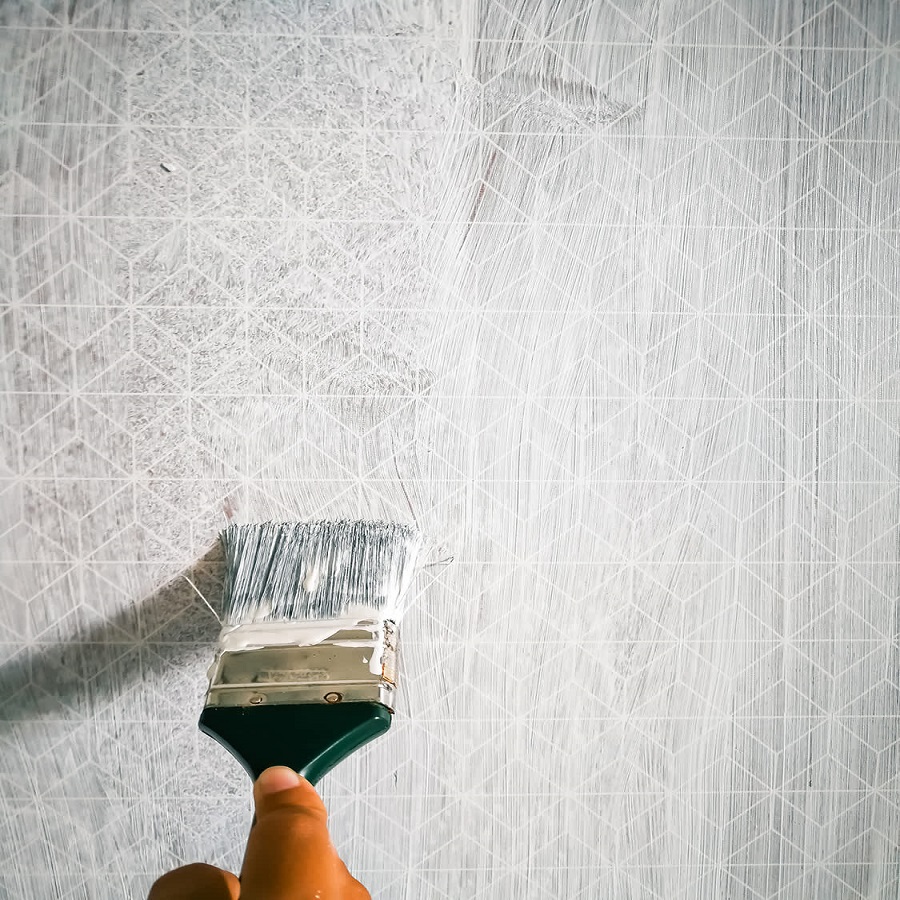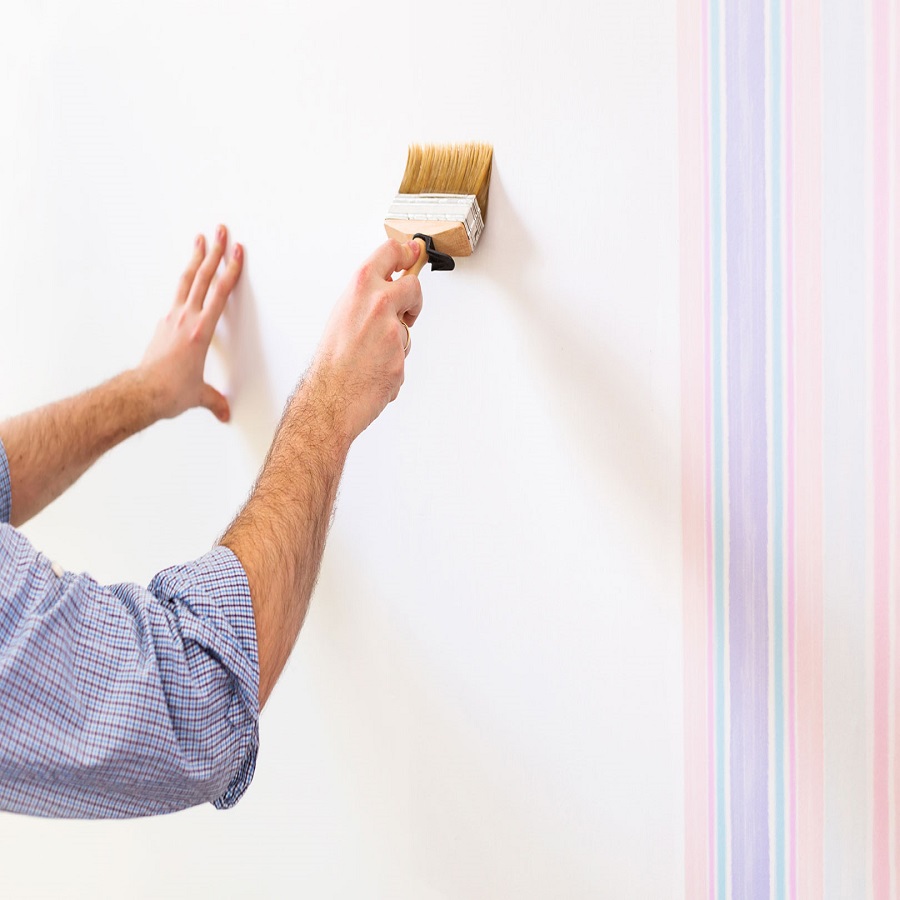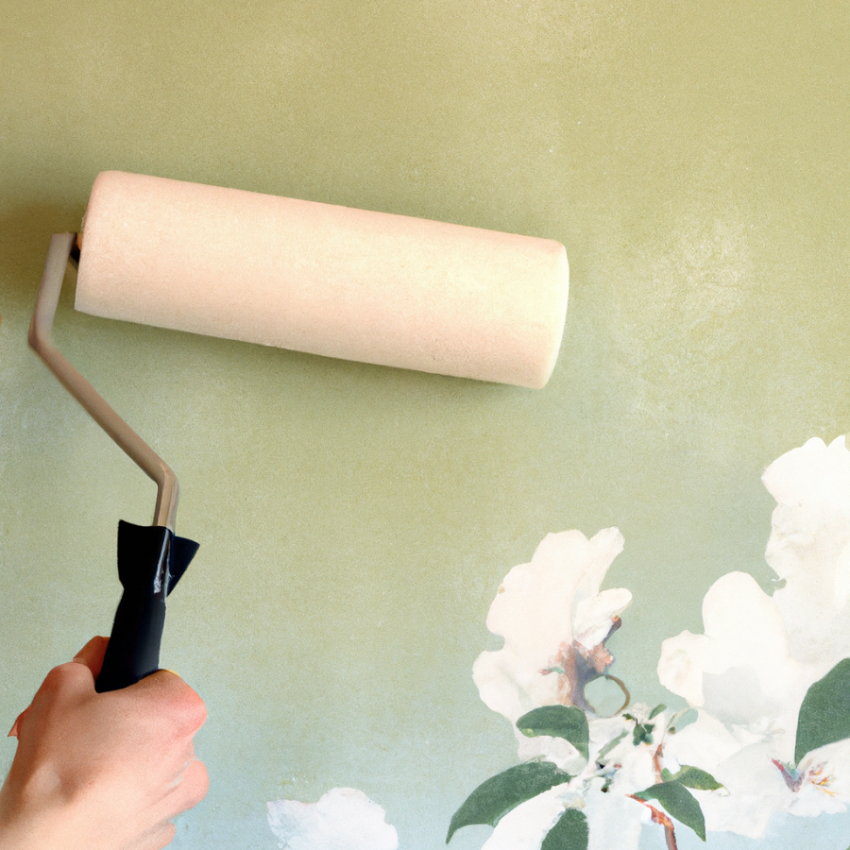Can you paint over wallpaper? Painting over wallpaper can be a cost-effective and time-saving way to refresh a room. However, it is important to approach this task with the right techniques to ensure a successful result. In this article, we will discuss the steps and considerations for painting over wallpaper, as well as the potential challenges and tips for achieving a professional finish.

Preparation and Planning
Before you begin painting over wallpaper, it is essential to properly prepare the surface and plan the project. Here are some important steps to consider:
- Clean the Wallpaper: Use a mild detergent and water to clean the wallpaper thoroughly. Remove any dirt, grease, or debris that may affect the paint adhesion.
- Repair Damaged Areas: Inspect the wallpaper for any tears, bubbles, or loose seams. Use wallpaper adhesive to secure any loose areas and patch any damaged spots with spackling compound.
- Sand the Seams: If the wallpaper has visible seams, use fine-grit sandpaper to smooth them out. This will help create a more even surface for painting.
- Prime the Wallpaper: Apply a high-quality primer to the wallpaper surface. This will provide a better base for the paint to adhere to and help seal the wallpaper seams.
Choosing the Right Paint
When painting over wallpaper, it is important to select the right type of paint for the job. Consider the following factors when choosing paint for this project:
- Paint Type: Look for a paint specifically designed for use on wallpaper or a high-quality latex paint that offers good coverage and durability.
- Satin or Eggshell Finish: These paint finishes are ideal for covering imperfections and providing a smooth, washable surface.
- Avoid Oil-Based Paints: Oil-based paints may not adhere well to wallpaper and could cause the wallpaper to bubble or peel.
Applying the Paint
Once the wallpaper has been properly prepared and the paint selected, it’s time to apply the paint. Follow these tips for a successful painting process:
- Use a High-Quality Brush or Roller: Invest in a good-quality brush or roller to ensure smooth and even application of the paint.
- Apply Thin Coats: Instead of applying a thick layer of paint, opt for multiple thin coats to prevent the wallpaper from becoming saturated and potentially lifting.
- Work in Small Sections: Paint one small section at a time, focusing on keeping a wet edge to avoid visible paint lines.
- Allow Sufficient Drying Time: Follow the recommended drying time for the paint between coats to ensure a durable and long-lasting finish.

Challenges and Considerations
While painting over wallpaper can be a viable option for updating a room, there are some potential challenges and considerations to keep in mind:
- Wallpaper Removal: In some cases, the wallpaper may not be suitable for painting over, such as vinyl or textured wallpaper. It may be necessary to remove the wallpaper completely before painting.
- Color and Pattern: The existing wallpaper color and pattern can affect the final appearance of the painted walls. Consider using a primer to help neutralize the wallpaper colors before applying the paint.
- Moisture and Humidity: If the room experiences high levels of moisture or humidity, such as a bathroom or kitchen, it may be more challenging to paint over wallpaper. Consider the environmental factors before proceeding with the project.
- Professional Consultation: If you are unsure about the condition of the wallpaper or the best approach for painting, consider consulting a professional painter for advice and assistance.
Precautions for paint over wallpaper
Painting over wallpaper can be a quick and cost-effective way to update the look of a room. However, there are some important considerations to keep in mind to ensure a successful and long-lasting result.
Preparing the Wallpaper
Before you start painting over wallpaper, it’s important to thoroughly inspect the wallpaper for any signs of damage or peeling. If the wallpaper is in good condition and firmly adhered to the wall, it can be a suitable base for painting. However, if there are any loose edges or areas of damage, these should be repaired before painting. Use a wallpaper adhesive to reattach any loose sections and patch any holes or tears with spackle or joint compound. Once the repairs have been made, allow sufficient time for the adhesive and patching compound to dry before proceeding with the painting.
Cleaning the Wallpaper
It’s also crucial to clean the wallpaper before painting to remove any dirt, grease, or other contaminants that could affect the adhesion of the paint. Use a mild detergent and water to wash the wallpaper, and then rinse it thoroughly with clean water to remove any residue. Allow the wallpaper to dry completely before applying the primer and paint.

Priming the Wallpaper
To ensure proper adhesion and a smooth, even finish, it’s essential to prime the wallpaper before painting. A high-quality, stain-blocking primer is recommended for this purpose, as it will help to seal the wallpaper and prevent any patterns or colors from bleeding through the paint. Apply the primer with a brush or roller, working in small sections to ensure thorough coverage. Allow the primer to dry completely before applying the paint.
Choosing the Right Paint
When painting over wallpaper, it’s important to select a paint that is suitable for the surface and is designed to provide good coverage and durability. A high-quality latex paint is generally recommended for painting over wallpaper, as it is easy to work with and provides a durable, washable finish. It’s also a good idea to choose a paint with a satin or semi-gloss finish, as these sheens are more resistant to moisture and are easier to clean than flat or matte paints.
Applying the Paint
When applying the paint, it’s important to work in thin, even coats to prevent drips and runs. Use a brush or roller to apply the paint, and be sure to feather the edges to blend the strokes and achieve a smooth finish. It may be necessary to apply multiple coats of paint to achieve complete coverage, especially if the wallpaper has a busy pattern or dark colors. Allow each coat of paint to dry completely before applying the next coat.
Sealing the Paint
Once the painting is complete, it’s essential to seal the paint to protect it from moisture, stains, and wear. A clear, water-based sealer is typically recommended for this purpose, as it will provide a durable, protective finish without altering the color or sheen of the paint. Apply the sealer with a brush or roller, working in small sections to ensure thorough coverage. Allow the sealer to dry completely before exposing the painted surface to moisture or cleaning.
Maintaining the Painted Wallpaper
After painting over wallpaper, it’s important to take steps to maintain the painted surface and ensure its long-lasting beauty. Avoid using abrasive cleaners or scrubbing the surface, as this can damage the paint and the wallpaper underneath. Instead, use a mild detergent and water to clean the painted surface, and gently wipe away any stains or soil with a soft cloth. It’s also a good idea to periodically inspect the painted surface for any signs of damage or wear, and to touch up any areas that may become chipped or scratched over time.

In conclusion
Painting over wallpaper can be a practical solution for transforming a room without the hassle of wallpaper removal. By following the proper preparation and painting techniques, as well as considering the potential challenges, you can achieve a professional and long-lasting finish. Whether you are aiming to update a dated wallpaper or simply change the room’s appearance, painting over wallpaper can be a rewarding project with the right approach.
